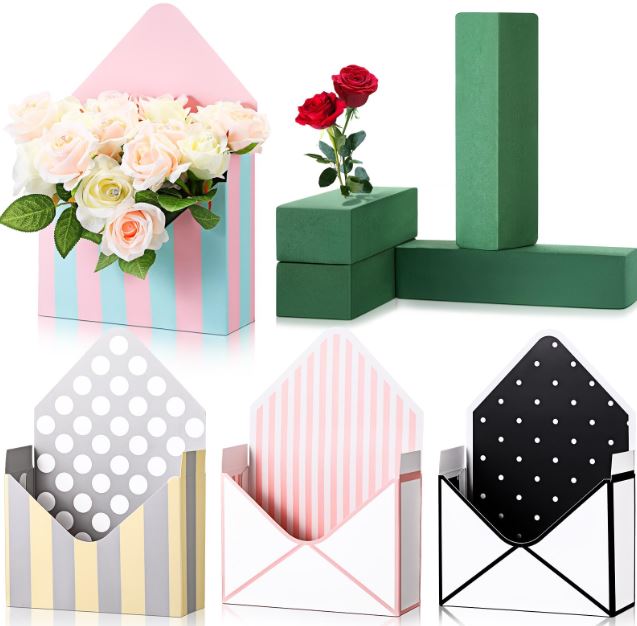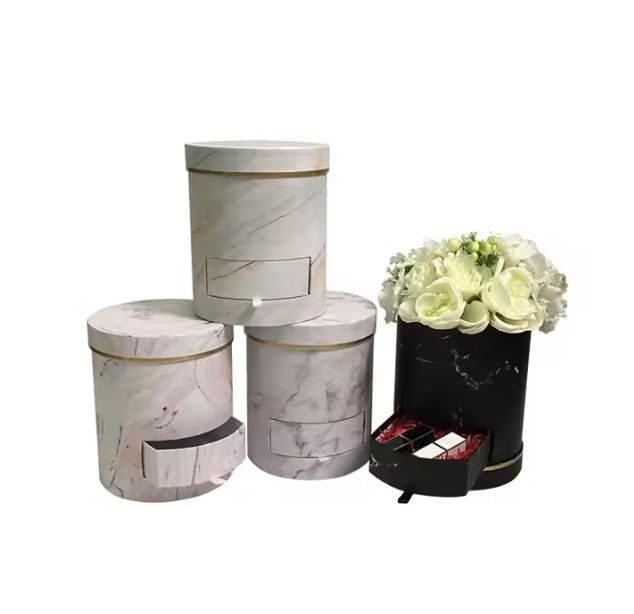- All
- Product Name
- Product Keyword
- Product Model
- Product Summary
- Product Description
- Multi Field Search
Views: 201 Author: XianDa Publish Time: 2024-12-26 Origin: Site

Content Menu
● What to Plant in a Flower Box
>> The Thriller, Filler, Spiller Method
● Sun-Loving Plants for Flower Boxes
● Shade-Tolerant Plants for Flower Boxes
● Combining Plants for Maximum Impact
>> Spring
>> Summer
>> Fall
>> Winter
● Flower Paper Box Supplier Options
Flower boxes are a delightful way to add color and charm to your home's exterior. Whether you're decorating a window sill, balcony, or porch, choosing the right plants can transform a simple container into a stunning display. This comprehensive guide will explore the best options for your flower box and provide tips on how to create a thriving miniature garden.
When selecting plants for your flower box, consider the following factors:
1. Sunlight exposure
2. Climate and temperature
3. Box size and depth
4. Watering requirements
5. Seasonal changes
A popular approach to arranging plants in a flower box is the "thriller, filler, spiller" method. This technique creates a visually appealing and balanced composition:
- Thriller: Tall, eye-catching plants that serve as the focal point
- Filler: Medium-sized plants that add volume and color
- Spiller: Trailing plants that cascade over the edges of the box
If your flower box receives full sun (6+ hours of direct sunlight per day), consider these vibrant options:
1. Geraniums: Classic and colorful, geraniums are a popular choice for sunny flower boxes[8].
2. Petunias: These prolific bloomers come in a wide range of colors and can spill over the edges of your box[8].
3. Zinnias: Cheerful and easy to grow, zinnias add a pop of color to any arrangement[8].
4. Marigolds: These sun-loving flowers offer bright yellows and oranges throughout the season.
5. Salvia: Attractive to hummingbirds, salvia provides vertical interest with its upright blooms[8].


For flower boxes in shadier locations, try these beautiful options:
1. Impatiens: These shade-loving plants bloom continuously in various colors[8].
2. Begonias: Available in both upright and trailing varieties, begonias thrive in partial shade[8].
3. Fuchsias: With their unique, dangling flowers, fuchsias add elegance to shaded boxes[8].
4. Coleus: Prized for their colorful foliage, coleus plants bring interest to shady spots[6].
5. Caladiums: These tropical plants offer stunning, heart-shaped leaves in various patterns and colors.
Creating a visually appealing flower box often involves combining different plants. Here are some winning combinations:
1. Sunny Delight: Geraniums (thriller), petunias (filler), and trailing lobelia (spiller)
2. Shade Paradise: Fuchsias (thriller), impatiens (filler), and ivy (spiller)
3. Colorful Foliage: Coleus (thriller), begonias (filler), and sweet potato vine (spiller)
4. Fragrant Mix: Lavender (thriller), alyssum (filler), and trailing rosemary (spiller)
Remember to consider the mature size of each plant when planning your arrangement.
To keep your flower box looking its best, follow these care tips:
1. Watering: Check soil moisture daily and water when the top inch feels dry[4].
2. Fertilizing: Use a balanced, water-soluble fertilizer every 2-4 weeks during the growing season[4].
3. Deadheading: Remove spent blooms regularly to encourage continuous flowering.
4. Pruning: Trim back overgrown plants to maintain shape and promote bushiness.
5. Pest control: Monitor for common pests like aphids and treat promptly if detected.
Adapt your flower box plantings to the changing seasons:
Plant early-blooming annuals like pansies, violas, and primroses. Add spring-flowering bulbs like tulips and daffodils for extra color[10].
Replace spring flowers with heat-tolerant annuals such as petunias, marigolds, and verbena. Consider adding herbs like basil or oregano for a functional touch.
Transition to autumn-hued plants like chrysanthemums, ornamental kale, and pansies. Add texture with ornamental grasses or small gourds.
In milder climates, plant evergreen shrubs, winter-blooming pansies, or ornamental cabbage. In colder regions, consider decorating with branches, pinecones, and outdoor-safe ornaments.
Get creative with your flower box design:
1. Rustic Charm: Use reclaimed wood to build a vintage-inspired box.
2. Modern Minimalist: Create a sleek look with metal or concrete planters.
3. Vertical Garden: Stack multiple boxes to maximize space on balconies or small patios.
4. Herb Haven: Dedicate a box to culinary herbs for both beauty and functionality.
While traditional flower boxes are often made of wood, plastic, or metal, some gardeners opt for eco-friendly alternatives like flower paper boxes. These biodegradable options are perfect for temporary displays or events. If you're interested in sourcing flower paper boxes, consider the following suppliers:
1. StarSeed Packaging: Offers a wide range of customizable flower boxes, including paper options.
2. LO Florist Supplies: Provides various floral packaging solutions, including paper-based boxes.
3. Eco-Friendly Packaging Co.: Specializes in sustainable packaging options for flowers and plants.
4. Green Box Supplies: Offers biodegradable flower boxes made from recycled materials.
5. Blooming Boxes: Provides innovative paper-based flower packaging solutions for florists and gardeners.
When choosing a flower paper box supplier, consider factors such as customization options, minimum order quantities, and eco-friendly certifications.
Follow these steps to plant your flower box like a pro:
1. Prepare the box: Clean the box and ensure proper drainage holes[9].
2. Add potting mix: Fill the box about halfway with high-quality potting soil[1].
3. Arrange plants: Place plants (still in their containers) in the box to plan the layout[1].
4. Plant: Start with thrillers, then add fillers and spillers[1].


5. Fill gaps: Add more soil around the plants, ensuring roots are covered[1].
6. Water: Thoroughly water the newly planted box[9].
7. Maintain: Regular watering, fertilizing, and pruning will keep your flower box thriving[4].
1. Choose the right size: Opt for larger boxes when possible, as they provide more room for roots and retain moisture better[5].
2. Use quality soil: A well-draining, nutrient-rich potting mix is essential for healthy plants[9].
3. Consider plant compatibility: Group plants with similar water and light requirements[10].
4. Experiment with textures: Mix plants with different leaf shapes and sizes for visual interest.
5. Add slow-release fertilizer: Incorporate a time-release fertilizer when planting for season-long nutrition[2].
1. Q: How often should I water my flower box?
A: The frequency of watering depends on factors such as sunlight exposure, temperature, and plant types. Generally, check the soil moisture daily and water when the top inch feels dry[7].
2. Q: Can I mix different types of plants in one flower box?
A: Yes, mixing plants can create a more interesting and dynamic display. Just ensure that all plants have similar light and water requirements[10].
3. Q: Do I need to replace the soil in my flower box every year?
A: While it's not strictly necessary to replace the soil annually, refreshing it with compost or new potting mix each spring can help maintain nutrient levels and improve drainage[7].
4. Q: How can I prevent my flower box from becoming waterlogged?
A: Ensure your flower box has adequate drainage holes. If it doesn't, create a layer of pebbles or gravel at the bottom to help excess water drain away from the roots[7].
5. Q: What are some good trailing plants for flower boxes?
A: Popular trailing plants for flower boxes include bacopa, ivy, vinca, creeping Jenny, and trailing petunias[7].
By following these guidelines and experimenting with different plant combinations, you can create stunning flower boxes that enhance the beauty of your home throughout the year. Remember to consider factors such as sunlight, water requirements, and seasonal changes when selecting plants for your flower box. With proper care and attention, your flower box will thrive and provide a delightful display of colors and textures.
Citations:
[1] https://www.zucchinisisters.com/window-box-flowers/
[2] https://www.youtube.com/watch?v=v0ui3QNdsbA
[3] https://www.bobvila.com/lawn-and-garden/window-box-flowers/
[4] https://www.containedcreations.com/blog/plant-window-boxes-like-a-pro
[5] https://www.carmenjohnstongardens.com/blog/carmens-guide-to-your-best-window-box
[6] https://plantersplace.com/container-gardening/container-corner/easy-annuals-for-window-boxes/
[7] https://www.reddit.com/r/gardening/comments/1b760ys/requesting_tips_for_window_boxes_first_timer/
[8] https://www.parkseed.com/blog/the-10-best-flowers-for-window-boxes
[9] https://anextraordinaryday.net/how-to-plant-a-window-box-garden-tutorial-planting-tips/
[10] https://www.flowerwindowboxes.com/Best-Spring-Window-Box-Flowers-s/423.htm